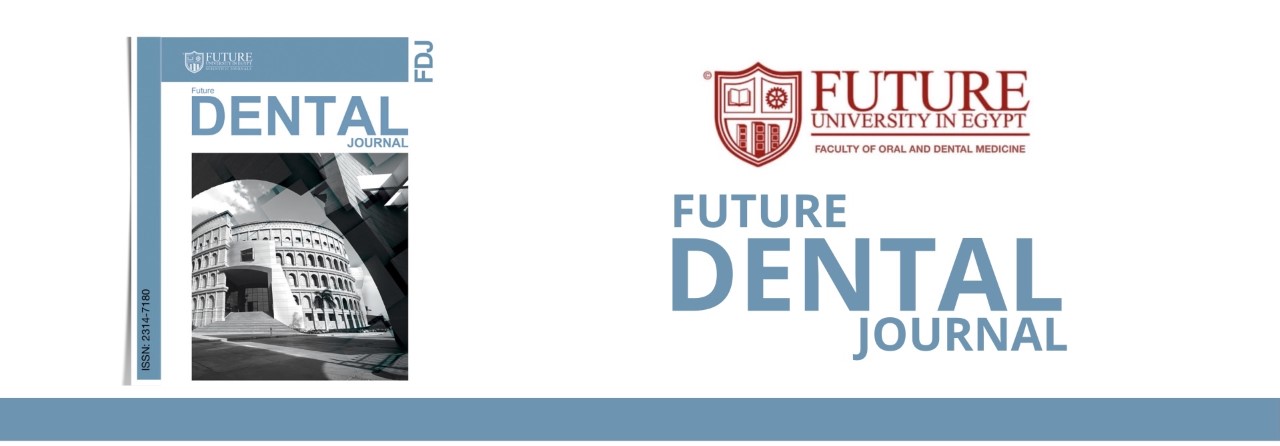
ORCID
Mostafa AbouShahba https://orcid.org/0000-0002-4407-2570 Sara H. Younis https://orcid.org/0000-0001-6327-4568
Abstract
Purpose. To assess shear bond strength (SBS) of nanohybrid resin composite used to repair CAD/CAM Hybrid Nanoceramic ceramic after various surface treatments.
Materials and Methods. SHOFU HC Hybrid Ceramic disks were sliced to obtain circular-shaped specimens (n= 30) were obtained. All specimens were thermocycled (5000 thermal cycles), then specimens were divided into three groups according to the surface treatment performed (sandblasting, HF acid etching, and laser irradiation) (n = 10). Repair procedure with nanohybrid resin composite was performed. SBS values were obtained, and failure modes were determined. Data were statistically analyzed (P ≤ 0.05). Results. The highest SBS mean value was found with Sandblasting, while the lowest mean value was found with Laser. There was a statistically significant difference between Sandblasting, Hydrofluoric acid and Laser groups, where (p=0.001). Also, statistically significant difference was found between Sandblasting and each of Hydrofluoric acid and Laser groups, where (p=0.003) and (p=0.001) respectively, while no statistically significant difference was found between Hydrofluoric acid and Laser groups, where (p=0.291). Conclusion. Surface treatment (modification) of the CAD/CAM hybrid nanoceramic material surface with sandblasting before repairing is mandatory to enhance the bond strength with nanohybrid resin composite repairing material. HF acid etching and laser irradiation are alternative surface treatment methods for CAD/CAM hybrid nanoceramic materials.
Recommended Citation
AbouShahba M, Younis SH. Bond Strength of Thermally Aged CAD/CAM Hybrid Nanoceramic Repaired with Nanohybrid Resin Composite. Future Dental Journal. 2025; 10(2):176-189.

